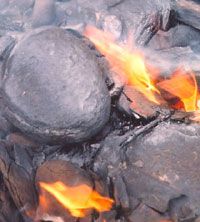-
 SOHO
SOHO
-
 M82
M82
-
 YBCO
YBCO
-
 Virtual memory
Virtual memory
-
 Monkey puzzle tree
Monkey puzzle tree
-
 Blood cell
Blood cell
-
 Abortion
Abortion
-
 Viscoplasticity
Viscoplasticity
-
 Precambrian
Precambrian
-
 Chagas Disease
Chagas Disease
-
 Electronic message service
Electronic message service
-
 Meiosis
Meiosis
-
 MOSS
MOSS
-
 Neutrophile
Neutrophile
-
 Medulloblastoma
Medulloblastoma
-
 XMP
XMP
-
 Hydrothermal circulation
Hydrothermal circulation
-
 Cardia
Cardia
-
 Chlorinity
Chlorinity
-
 Minor axis
Minor axis
-
 Convex
Convex
-
 Aerodynamic vehicle
Aerodynamic vehicle
-
 W3C
W3C
-
 Venera
Venera
-
 Bilirubin
Bilirubin
-
 Giotto
Giotto
-
 Coenzyme
Coenzyme
-
 Angina
Angina
-
 Equator of a celestial body
Equator of a celestial body
-
 Inhibition
Inhibition
Bituminous shale
Bituminous shales are rocks containing organic substances called kerogens. When there is a sufficient quantity of kerogens, they can be exploited to produce oil and gas fuel. Bituminous shale should not be confused with oil sands.
Geologically speaking, bituminous shales are not " true shales " because they are not the result of metamorphism. Moreover, they have no precise composition. Nevertheless, they are divided into three families :
- carbonate-rich shales;
- siliceous shales;
- carbonaceous shales.
Bituminous shales and oil production
Kerogen can be transformed into oil by a chemical process called pyrolysis. The rocks are heated to a temperature of 450 to 500 degrees in the absence of air. The vapour formed is then distilled to produce shale oil (a form of oil) and gas. On a worldwide scale, 2800 to 3100 billion barrels of oil could be produced from these rocks.
Bituminous shale can also be burned as such but the energy quality of the fuel is then less.
Bituminous shale: a low profit polluting operation
The exploitation of bituminous shale is not very profitable since the processes that must be applied to the rocks are long and costly. Furthermore, the extraction and processing of the fuel are harmful to the environment. The water used in the mines is acidified and enriched in metals. Large emissions of sulphur-containing gases and particles cause substantial atmospheric pollution. Furthermore, the production of oil from shale produces a larger amount of CO2 than the traditional petrochemical industry.

Oil shales can be used for fuel in their natural state. However, the process is not very profitable. © US Department of Energy (DOE), public domain
Latest
Fill out my online form.



